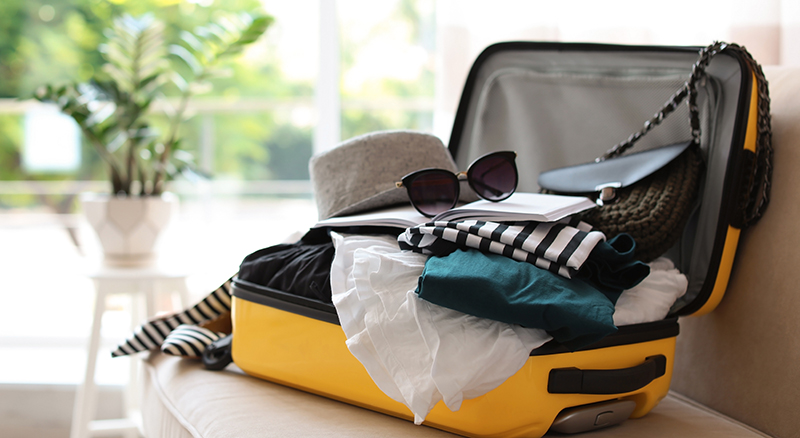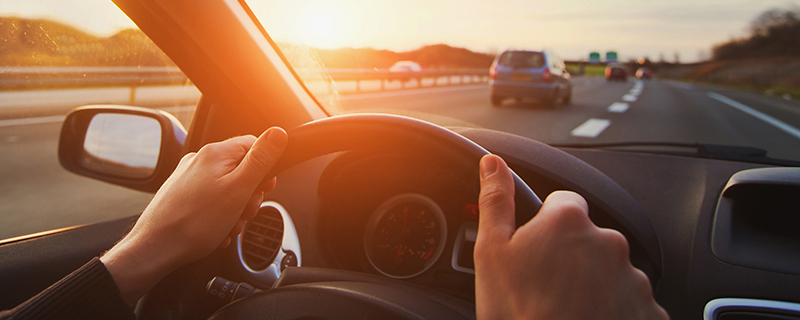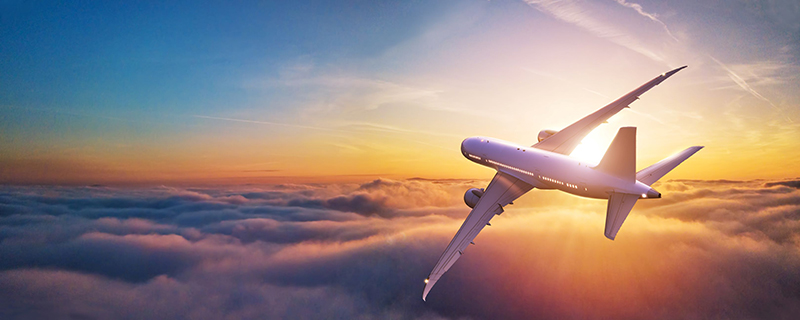Traveling with Bronchiectasis and Nontuberculous Mycobacterial Lung Disease
Traveling for a vacation or to see friends and family can be important and exciting. Yet for many, spending the night away from home can spark feelings of fear and anxiety. Having a lung condition like bronchiectasis or nontuberculous mycobacterial (NTM) lung disease does not mean you have to give up travel; it just may require a bit more pre-planning. Ultimately, with the right preparations and forward thinking, traveling can safe and enjoyable.

To Begin
- Discuss plans for your trip with your doctor including where you are going, how long you will be away, and what type of travel you will be using (e.g., car, airplane, cruise ship). Your doctor may give you some advice on whether your health can tolerate traveling. Create an action plan with your doctor for what to do if you should become ill while away. Your doctor may also give you other valuable advice to consider before you leave.1
- Do your research. Learn about what the weather is like where you are going prior to packing. Check it often, as weather trends can change. Ask yourself, “What should I be prepared for?” Find a doctor and a pharmacy near your destination just in case you experience an exacerbation (or a “flare-up”) while traveling.1
- Check to see if your medicines will last the length of your trip. Request refills if necessary. Plan for a couple of extra days in case you decide to stay longer, or your travel plans get delayed.
- Make sure your trip plans are “doable.” It is easy to get excited about planning for a trip, but make sure that your plans do not exhaust you. Plan activities at a time of day when you have the most energy. Make time for rest, as necessary. Allow time during each day to continue your airway clearance routine. Do not stop airway clearance therapy while away from home.
- Consider purchasing travel insurance. Unfortunately, people with bronchiectasis and NTM are more likely to get lung infections.2 Travel insurance may be a way to recover costs from your trip if you have an exacerbation or lung infection and feel the need to cancel.
- Take advantage of the any features or services at your location that can assist you: Do you struggle climbing stairs? Do you need extra space in your accommodations for medical equipment? Calling the hotel or resort ahead of time may allow you to take advantage of services offered to those that may have a medical condition or a disability. Consider requesting a handicap accessible room to give you a little extra space for any medical equipment you may be bringing with you. To avoid steps or an elevator, you can also request a first-floor room (if available). Make sure the room you will be staying in is smoke free. You also may want to make a request for housekeeping to avoid using any cleansers with strong odors if they tend to irritate your airways.

Items to Bring with You
- Printed Health Information – When traveling, it is a good idea to have a list of your medicines and a brief health history. This will be a helpful reference for health care providers if you should become ill during your trip. Include important contact information and phone numbers. Be sure to bring your insurance cards. If you wear oxygen, bring a copy of your oxygen prescription with you. You may be asked to show it to travel personnel.
- Medicines – Pack enough medicines to last the duration of your trip. Leave them in their original prescription containers. No matter how you are planning on traveling, make sure you keep all your medicines with you in your carry-on bag.
- Airway clearance devices– If you use airway clearance devices like an oscillating (ah ssii late ing) vest or a positive expiratory pressure (PEP_ device, be sure to pack it. It is important that you continue your airway clearance routine while traveling or away from home.
- Supplemental oxygen and accessories (if applicable) – Be sure to pack extra oxygen equipment (e.g., nasal cannulas [can you luhs]). If using oxygen tanks, bring extra washers and an extra regulator. If you use a portable concentrator, bring extra batteries. If you plan to use oxygen tanks while you are traveling, call your homecare company to see if they can arrange a delivery at your destination.
- Lightweight luggage – It is recommended that you pack light. Bringing a heavy suitcase can be difficult and hard to lift. Pack layers that you can use to stay warm or can easily be shed if you get hot. Many hotels and resorts have “same day” laundry service that can wash your laundry and get it back to you in less than 12 hours.

If you are traveling by car
- Make sure your car is ready for travel. Having a mechanic inspect your vehicle before you travel may give you peace-of-mind and possibly prevent mechanical issues while you are on the road. Be sure that you have had a recent oil change.
- Make frequent stops to stand and stretch. Taking frequent rest stops will help to prevent blood clots (also known as deep vein thrombosis [thrahm bow sis] [DVTs]) from forming.
- Drink plenty of liquids. It is easy to become dehydrated while traveling. Drink plenty of water and other hydrating fluids while you are traveling to your destination. These fluids will also help to keep mucus thin and easily coughed out.
- Stay in contact. Bring your cell phone. Having a way to reach others in the event of an emergency can be lifesaving.
- Bring napkins and tissues to dispose of any mucus that you are able to clear while on your trip.
- Pack healthy foods and snacks. Eating foods that are good for you will help you to feel your best while traveling. Fast food is loaded with salt and other additives that can lead you to feeling bloated and uncomfortable.
- Keep the air quality inside of the car ideal. Ask that your travel partners to not smoke in the car. Keep the air temperature in the car comfortable. Keep the windows up to avoid fumes and other environmental triggers. It is helpful to use the air conditioning on “recirculate” to help avoid outdoor pollution.
- If you wear oxygen, keep the device you are using secure and upright. Avoid storing or leaving oxygen equipment in a hot car. Make sure your tubing is not crimped or blocked. Be sure to bring enough oxygen (or battery power for your concentrator) to last 1.5 times the duration of your road trip. Running low on oxygen could cause you a lot of stress and could be dangerous.

If you are traveling by air
- Call the airline. You should notify the airline in advance if you are traveling with oxygen or if you will require any other special requests (e.g., assistance with transfers to connections, help with luggage). If you plan to use a portable oxygen concentrator, the airline may require you to have a certain amount of battery power to account for extra time with runway taxying and layovers. We suggest that you take enough battery power to last 1.5 times the duration of your flight(s). Ask if there is any additional paperwork that may be required for bringing medical equipment onboard. Visit the Transportation Security Administration (TSA) for more information about preparing for airline travel. To find out which portable oxygen units have been approved by the Federal Aviation Administration (FAA) click here.
- Pack your medicines accordingly. Medicines should be in their original packaging. Be sure to let the TSA know if your medicines require certain accessories (e.g., freezer packs, IV bags). Label all items. TSA allows an exemption to the “3-1-1 liquid rule” (i.e., normally only liquids of 3.4 ounces or less that fit in a 1-quart bag are allowed in carry-on luggage) if the liquid is medically necessary. Visit the TSA medications website if you have a need for further information. All medicines should be packed in your carry-on luggage and not checked and stowed under the plane. If your flight gets delayed, you will not have to worry about missing a dose.
- Altitude can cause problems. Airplanes are pressurized for high altitudes. This means there is less oxygen in the air during a flight. Patients with bronchiectasis or NTM lung disease may be affected by this and experience lower oxygen blood levels. Talk to your doctor about this and find out if they think that you may require oxygen for your flight. Your doctor may perform a test on you called the “high altitude simulation test” to find out if you will need supplemental oxygen for your flight.1
***Note: The emergency oxygen masks on a plane cannot be used for people who need oxygen during flight. This oxygen is for emergency use only if the plane loses cabin pressure.
- Wear a mask or face covering. This will act as a barrier against airborne droplets.
- Bring napkins and tissues. These can be useful when you need to dispose of any mucus that you are able to clear while on your trip.
- Use hand sanitizer/antibacterial wipes. Cleaning the arm rests and high touch surfaces around you in an airplane with antibacterial wipes can help reduce the risk of getting sick. Clean your hands often with hand sanitizer.
- Drink fluids to prevent dehydration. Avoid drinks like coffee, tea, and alcohol that can be dehydrating.
- Consider explaining your condition to your neighbor if sitting next to a stranger. When traveling next to people that you do not know, you may consider telling the person next to you that you have a lung condition that causes you to cough frequently but is not contagious to others. Sharing this brief information may relieve any concerns that may come up in flight.
While away on your trip
- Airway clearance therapy should be continued throughout your trip. Although it can be difficult at times to set aside time to do your airway clearance therapy, your routine should not be interrupted.
- Continue to take all your medicines as prescribed. Properly store medications according to their labels.1
- Exercise often.While traveling, your exercise routine may not be the same, however, you should still make sure that you are getting regular activity.
- Use sunscreen or UV-protective clothing. If you are taking medicines that make you more likely to sunburn, it may be helpful to use sunscreen or UV-protective clothing.
- Practice good hand hygiene. Use hand sanitizer after touching public surfaces. Avoid touching your face unless you have washed your hands.
- ENJOY! Traveling will be a lot of fun because you have planned and prepared!
References
1Shteinberg M, Crossley B, Lavie T, et al. Recommendations for travelling with bronchiectasis: a joint ELF/EMBARC/ERN-Lung collaboration. ERJ Open Res. 2019;5(4):00113-2019. doi: https://doi.org/10.1183/23120541.00113-2019.
2Lesan A, Lamle AE. Short review on the diagnosis and treatment of bronchiectasis. Med Pharm Rep. 2019;92(2):111-116. doi: https://doi.org/10.15386/cjmed-1060.